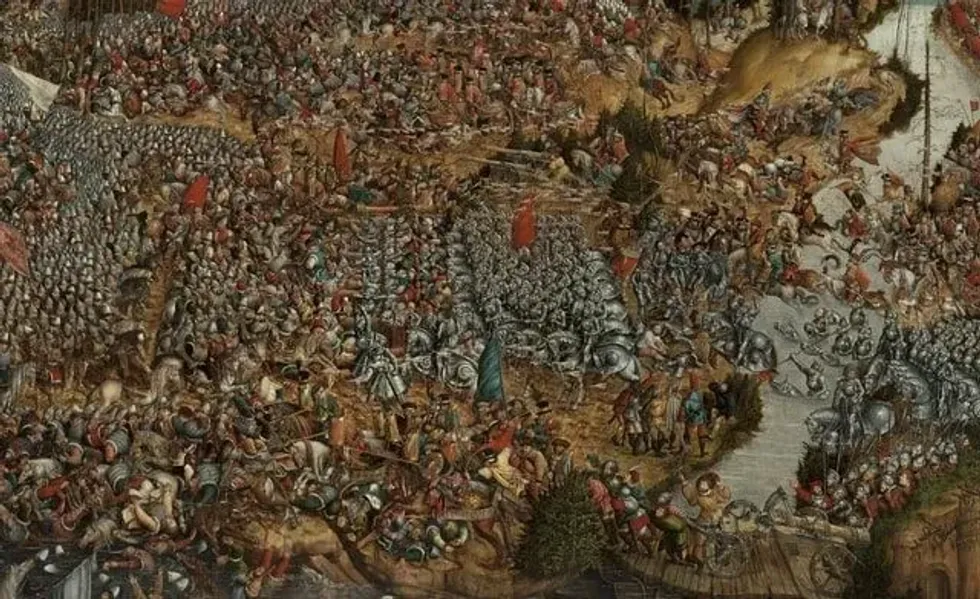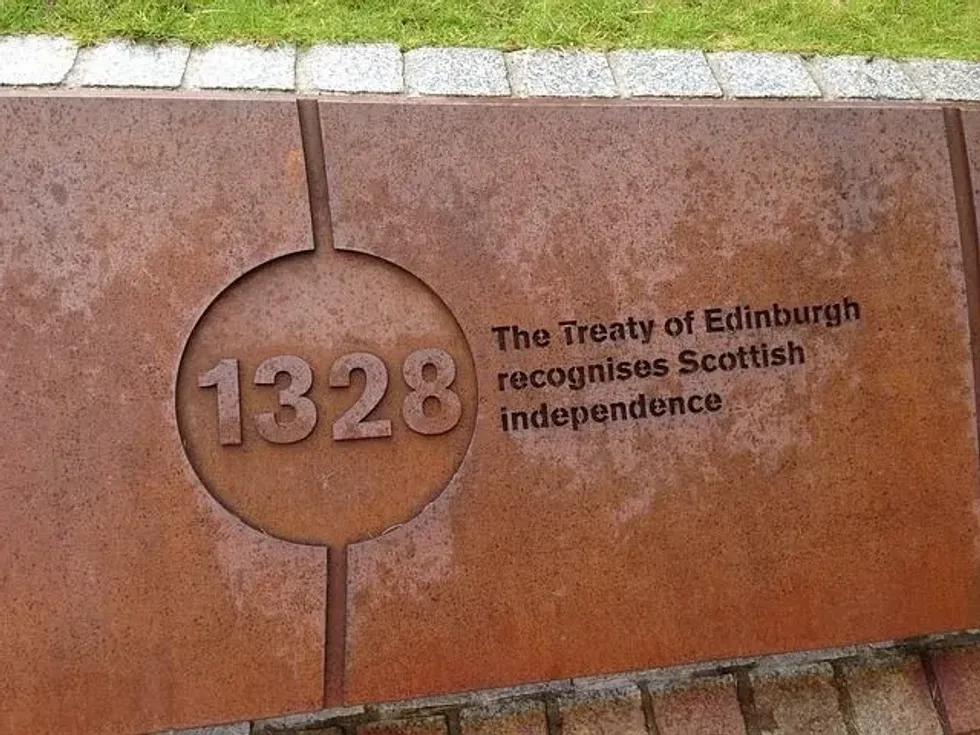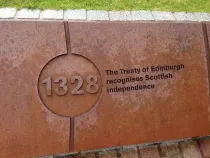13 Battle Of Bannockburn Facts We Bet You Didn't Know

A modern monument was built in a speculated sight of the Battle of Bannockburn, along with a Robert the Bruce statue designed by Pilkington Jackson.
The victory of the Scottish against the English in this battle makes it one of the most celebrated in history. However, this independence was short-lived when the successor of Edward II, King Edward III, won a decisive battle at Halidon Hill.
The Battle of Bannockburn was a battle between Robert the Bruce, King of the Scottish army, and Edward II, King of England's army, during the First War of Scottish Independence. The battle took place on June 23 and 24 in 1314.
Although the Scottish were victorious in this war, they did not gain independence until 1328. However, the Battle of Bannockburn was a major event in Scottish history.
In 1313, King Robert I demanded that all his followers, still loyal to John Balliol, the Scottish king, either acknowledge Robert I as king or lose their lands. After this incident, Scotland was invaded by King Edward II.
The Scots royal fortress, Stirling Castle, was occupied by the English and barricaded by the Scottish army. King Edward then assembled soldiers (the largest army to invade Scotland) to retrieve the castle.
In the Battle of Bannockburn, the Scottish were outnumbered by English soldiers. However, they made good use of the terrain. The Scottish army forced the English army into a marshy and cramped battlefield with no room to move. Then, the English army tried to flee, and many were slaughtered by the Scottish army.
The Battle of Bannockburn Visitor Center is run by the National Trust for Scotland and is open to visitors daily between March and October. The original monument building was closed on October 31, 2012, for demolition.
It was replaced with a new one, inspired by Scotland's traditional buildings, that was created by Hall and Reiach Architects. This project was funded by the Heritage Lottery Fund and the Scottish Government and was a partnership between Historic Environment Scotland and the National Trust for Scotland.
The new visitor center of the battle site is now called Bannockburn Visitor Center.
It opened in March 2014. Another attraction created near the monument is a multiplayer game.
Robert Bruce's Anglo-Norman family came to Scotland in the 12th century and was related to the Scottish royal family by marriage. Hence, the grandfather of Robert I, Robert de Bruce, became King of Scotland when the post was vacant in 1290. Later, Edward I claimed control over the Scottish, handing the crown to John de Balliol.
In 1274, Robert the Bruce was born. There is little information about his career until the year 1306. Robert the Bruce was crowned as king on March 25, 1306.
Edward II was King of England from 1307-1327. Edward II was born in 1284 in Caernarfon Castle, North Wales. He was the youngest child.
He was unsuited for the role of king and caused an unwinnable Scottish war, huge debts, hostile relations with France, and dissatisfied magnates. He was forced to step down from his position, and his son, Edward III, who was only 14 years, old became the King of England in January 1327.
This was the first time that this had happened in England's history. He was also well-known for his defeat in the Battle of Bannockburn.
Many pieces of evidence indicate that he, for many years after abdicating from the throne, lived in Italy. Although his reign was not memorable, one thing to remember about Edward II was that he founded colleges at Cambridge and Oxford.
Who won the Battle of Bannockburn?
The Battle of Bannockburn was won by the King of the Scottish army, Robert the Bruce, against Edward II, the King of England.
In 1296, the Scottish Wars of Independence took place between Scotland and England. Under Edward I's command, the English were initially successful and had victories at the Capture of Berwick and Battle of Dunbar in 1296.
The removal of the King of Scots, John Balliol, was also one of the reasons for the success of the English. Edward II came to the throne after the English King, Edward I, died in 1307.
He was not as good of a leader as his father. Stirling Castle was one of the extremely important castles captured by the English because it controlled the route north to the Scottish Highlands.
It was surrounded by the younger brother of Robert the Bruce, Edward Bruce, in 1314. Edward Bruce made an agreement which stated that if by mid-summer the castle was not relieved, then it would be handed over to the Scottish.
The English army could not ignore this, and Edward II requested 25,000 infantry, several of whom were equipped with longbows, and 2,000 armored English cavalrymen. This English army was the largest in history to invade Scotland.
The Scottish infantry was made up of around 6,000 men led by Edward Bruce, King Robert the Bruce, and his nephew, Thomas Randolph. Unlike the English cavalry, the Scottish cavalry was likely unequipped to charge on enemy lines.
The battlefield has been debated for several years now, with many modern historians agreeing on the fact that the current recognized site is not correct. Several medieval battles only lasted for a few hours, so it is unusual that this battle lasted for two days.
The English cavalry advanced towards the Scottish lines on June 23, 1314, as the English vanguard saw a Scottish group withdraw into the woods. They came across Scots led by Robert Bruce.
Bruce and the English knight, Henry de Bohun, faced each other in single combat.
Robert Bruce split Bohun's head with a battle axe as they passed each other when Bohun charged at him. Then, the Scottish rushed at the English force under Hereford's and Gloucester's command, who later retreated.
Who fought in the Battle of Bannockburn?
The battle of Bannockburn was fought by King Robert I and King Edward II.
The famous William Mackenzie, a Scottish historian, concluded that the English army had 3,000 English knights, men at arms, and mounted men with a detachment of Welsh archers. He also concluded that Scottish forces had 7,000 men.
Before the second day of battle, the English forces crossed what was known as the Bannockburn stream during the night. Alexander Seton, a Scottish knight, was fighting for Edward's army but abandoned the English camp and told Robert Bruce that the morale of the English was low, encouraging him to attack.
Scottish soldiers advanced in the morning from New Park. Just after daybreak, Edward was shocked to see Scottish soldiers emerging out of the woods and advancing towards the English troops.
The Scottish schiltron eventually pushed the English back, grounding them. As Edward's knights advanced, the English longbowmen were trying to support their knights; however, they were asked to stop as they were injuring their men.
Then, the English tried to deploy both their English and Welsh longbowmen to flank the Scottish men who were approaching; however, they were scattered by 500 cavalries under Sir Robert Keith.
The English cavalry was cornered against the Bannockburn, which made it hard for them to move. The English broke rank as they could not hold their formation.
Giles d'Argentan and Aymer de Valence soon understood that the English had lost the battle and that they must lead Edward II to a safe place.
They seized the helm of the king's horse, dragging him away with 500 royal bodyguard knights following them. Once d'Argentan led the king to safety, he turned back and returned to the battle, where he was slain.
There were three divisions within the Scottish army of schiltrons, one commanded by Robert Bruce, the second by Edward Bruce, and the third by the Earl of Moray. After Sir Henry de Bohun was killed on the first day by Robert, the English had no other choice but to withdraw for the night.
Robert thought of a strategy that was not used by William Wallace, his predecessor. He planned a full-scale attack against the English, using schiltrons as offensive units.

Why did the Battle of Bannockburn happen?
The Battle of Bannockburn took place after King Edward II invaded Scotland. Scottish king, Robert I, advanced against Edward's army to reclaim the Scottish land and Stirling castle.
Robert Bruce was crowned king of the Scottish in 1306. There were not many knights or archers in the army of Robert the Bruce, unlike Edward's forces.
Bruce's army lacked armor and was poorly trained, with the majority of them being Scottish spearmen. However, their schiltron worked effectively against the English cavalry charges.
Robert the Bruce was able to position his men south of Stirling Castle in a forested and elevated area called New Park. This position dominated the old Roman road, which headed south to Stirling castle (the road the opposite army had to take if they were to free Stirling Castle).
Furthermore, Robert the Bruce ordered his army to dig pit holes on the south side of Bannockburn, near a small river. The army occupied a dangerous defense position protected by elevated woodlands, pit holes, wet marshes, and the Bannockburn.
Edward fled after he was rescued with his bodyguard, and fear had grown among the troops. King Edward and his 500 men first reached Stirling Castle, where they were turned away by the commander of the castle, Sir Philip de Moubray, as it was about to be surrendered to the Scottish army.
They were then pursued by James Douglas and his horsemen. They eventually reached Dunbar Castle and took a ship to Berwick.
The rest of Edward's army tried to escape Bannockburn's massacre towards the English border around 90 mi (140 km) away. However, several men were killed by both the pursuing army and residents of the countryside, which they passed through. Only a few foot soldiers escaped to England.
These men were Welsh spearmen who were guided by Sir Maurice de Berkley, their commander. A lot of them reached Carlisle.
Almost 11,000 English men were killed. The losses faced by the Scottish was far less comparatively, with only two of their knights killed.
What happened at the Battle of Bannockburn?
The Battle of Bannockburn was a battle won by the Scottish king, Robert I, against Edward II, which expanded the influence as well as the territory of Robert the Bruce.
The immediate effect of the victory of the Scottish was Stirling Castle's surrender to King Robert the Bruce.
Robert then slighted the castle to prevent it from being captured in the future. The surrender of Bothwell Castle was also important, where a number of English nobles, like the Earl of Hereford, took refuge.
The exchange of these nobles released Robert's sisters (Mary Bruce and Christian Bruce), wife (Elizabeth de Burgh), daughter (Marjorie Bruce), and the Bishop of Glasgow (Robert Wishart), which ended their eight years of English imprisonment.
The victory against the English opened the north side of England to Scottish raids, allowing the Scottish Empire to invade Ireland. After the Declaration of Arbroath failed to secure recognition of the independence of Scotland by the Pope, the Edinburgh-Northampton treaty occurred in 1328.
This treaty stated that English Empire recognized the complete independence of the Scottish Empire, acknowledging Robert Bruce and his successors as the rightful rulers of Scotland.
The Bannockburn Preservation Committee, in 1932, bestowed the battlefields to the National Trust for Scotland under Kincardine and the 10th Earl of Elgin. These lands were further purchased in 1960 and 1965 to promote visitor access.
Above the possible field of the battle, a modern monument was built, where the warring groups were thought to have camped the day before the battle. There are two semicircular walls in this monument that depict the opposite parties.
Close to this monument, there is a Bruce statue from the '60s, designed by Pilkington Jackson. Although Pilkington designed the statue, he commissioned the Ontario College of Art's Thomas Taylor Bowie to make the statue.
The statue and the monument are some of the popular tourist destinations of this region. This battle site is included in Scotland's Inventory of Historic Battlefields, and Historic Scotland protects it under the Historic Environment Act of 2011.
The English soldiers that were killed at Bannockburn were buried with full honors as per their ranks. Robert the Bruce only had a little support before the battle was fought in Scotland. After this battle, he was considered a national hero. Most people in Scotland supported Robert the Bruce.
However, Robert's political rivals suffered in Scotland. After this battle, the English learned their lesson. However, later, in the Halidon Hill and Dupplin Moor Battles, the Scottish were defeated as they used the same plan.
We Want Your Photos!
More for You
Bachelor of Engineering specializing in Aeronautical/Aerospace Technology, Master of Business Administration specializing in Management

Arpitha RajendraBachelor of Engineering specializing in Aeronautical/Aerospace Technology, Master of Business Administration specializing in Management
With a background in Aeronautical Engineering and practical experience in various technical areas, Arpitha is a valuable member of the Kidadl content writing team. She did her Bachelor's degree in Engineering, specializing in Aeronautical Engineering, at Nitte Meenakshi Institute of Technology in 2020. Arpitha has honed her skills through her work with leading companies in Bangalore, where she contributed to several noteworthy projects, including the development of high-performance aircraft using morphing technology and the analysis of crack propagation using Abaqus XFEM.
Disclaimer
1) Kidadl is independent and to make our service free to you the reader we are supported by advertising. We hope you love our recommendations for products and services! What we suggest is selected independently by the Kidadl team. If you purchase using the Buy Now button we may earn a small commission. This does not influence our choices. Prices are correct and items are available at the time the article was published but we cannot guarantee that on the time of reading. Please note that Kidadl is a participant in the Amazon Services LLC Associates Program, an affiliate advertising program designed to provide a means for sites to earn advertising fees by advertising and linking to Amazon. We also link to other websites, but are not responsible for their content.
2) At Kidadl, we strive to recommend the very best activities and events. We will always aim to give you accurate information at the date of publication - however, information does change, so it’s important you do your own research, double-check and make the decision that is right for your family. We recognise that not all activities and ideas are appropriate for all children and families or in all circumstances. Our recommended activities are based on age but these are a guide. We recommend that these ideas are used as inspiration, that ideas are undertaken with appropriate adult supervision, and that each adult uses their own discretion and knowledge of their children to consider the safety and suitability. Kidadl cannot accept liability for the execution of these ideas, and parental supervision is advised at all times, as safety is paramount. Anyone using the information provided by Kidadl does so at their own risk and we can not accept liability if things go wrong.
3) Because we are an educational resource, we have quotes and facts about a range of historical and modern figures. We do not endorse the actions of or rhetoric of all the people included in these collections, but we think they are important for growing minds to learn about under the guidance of parents or guardians.







